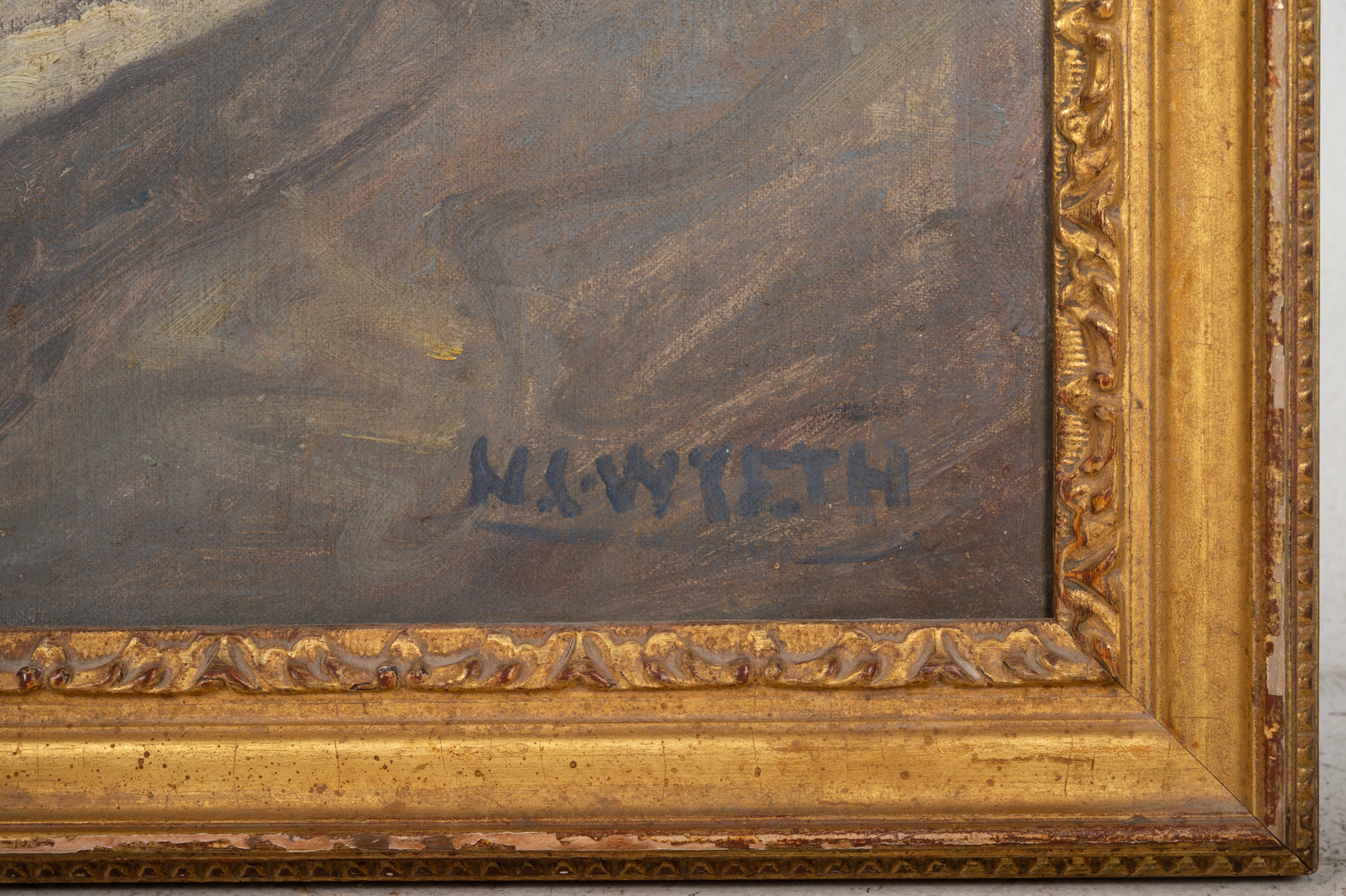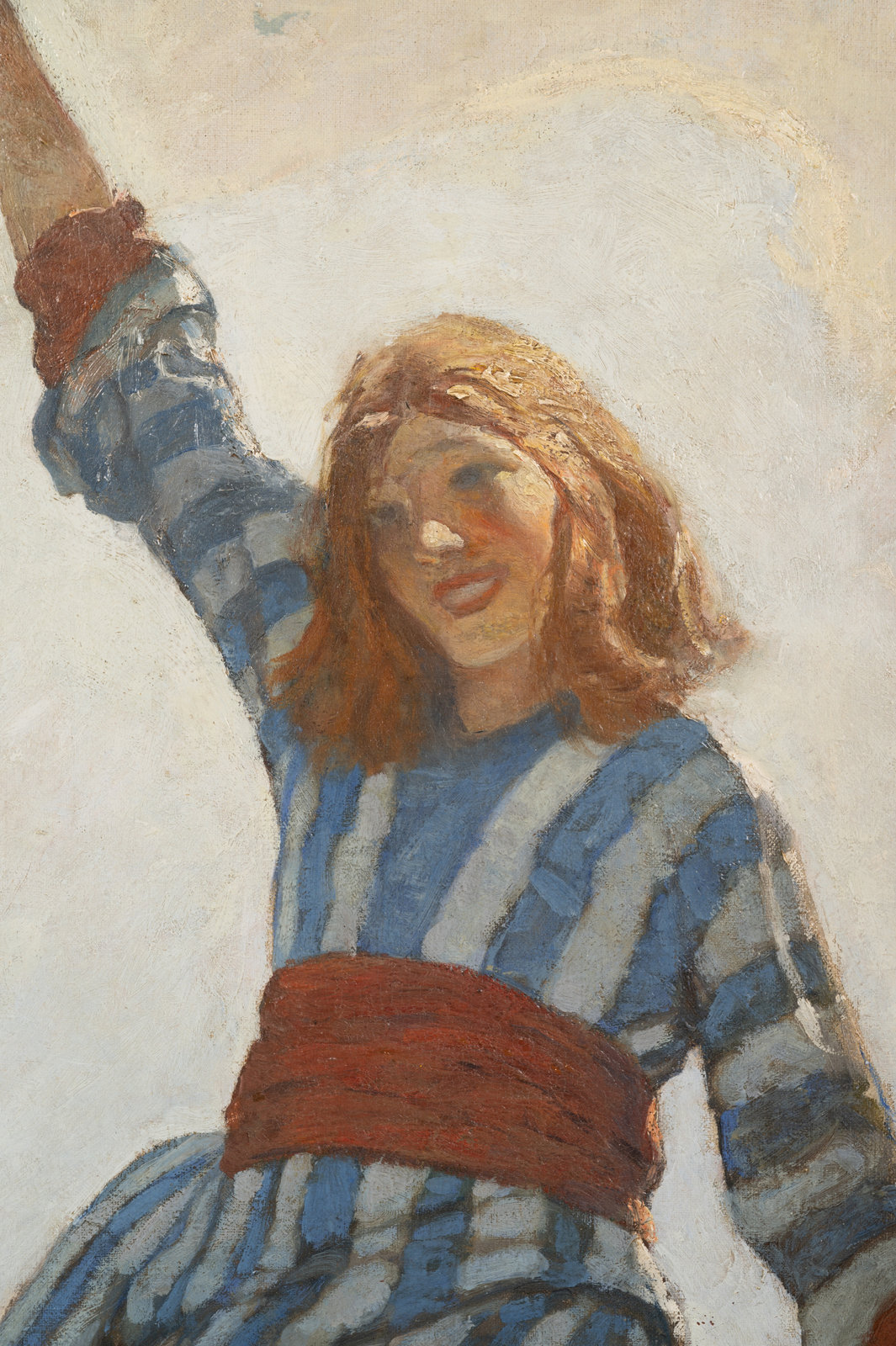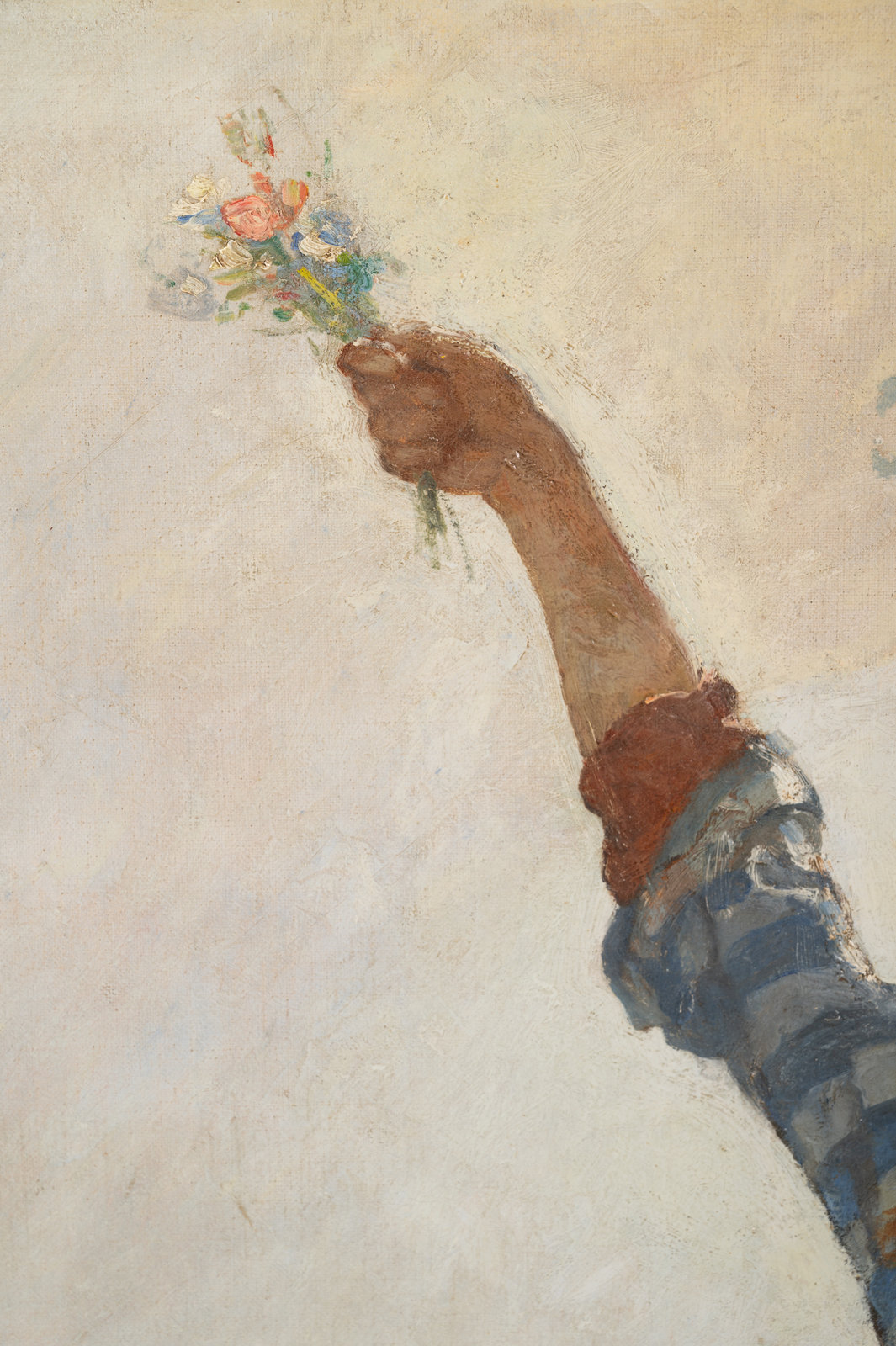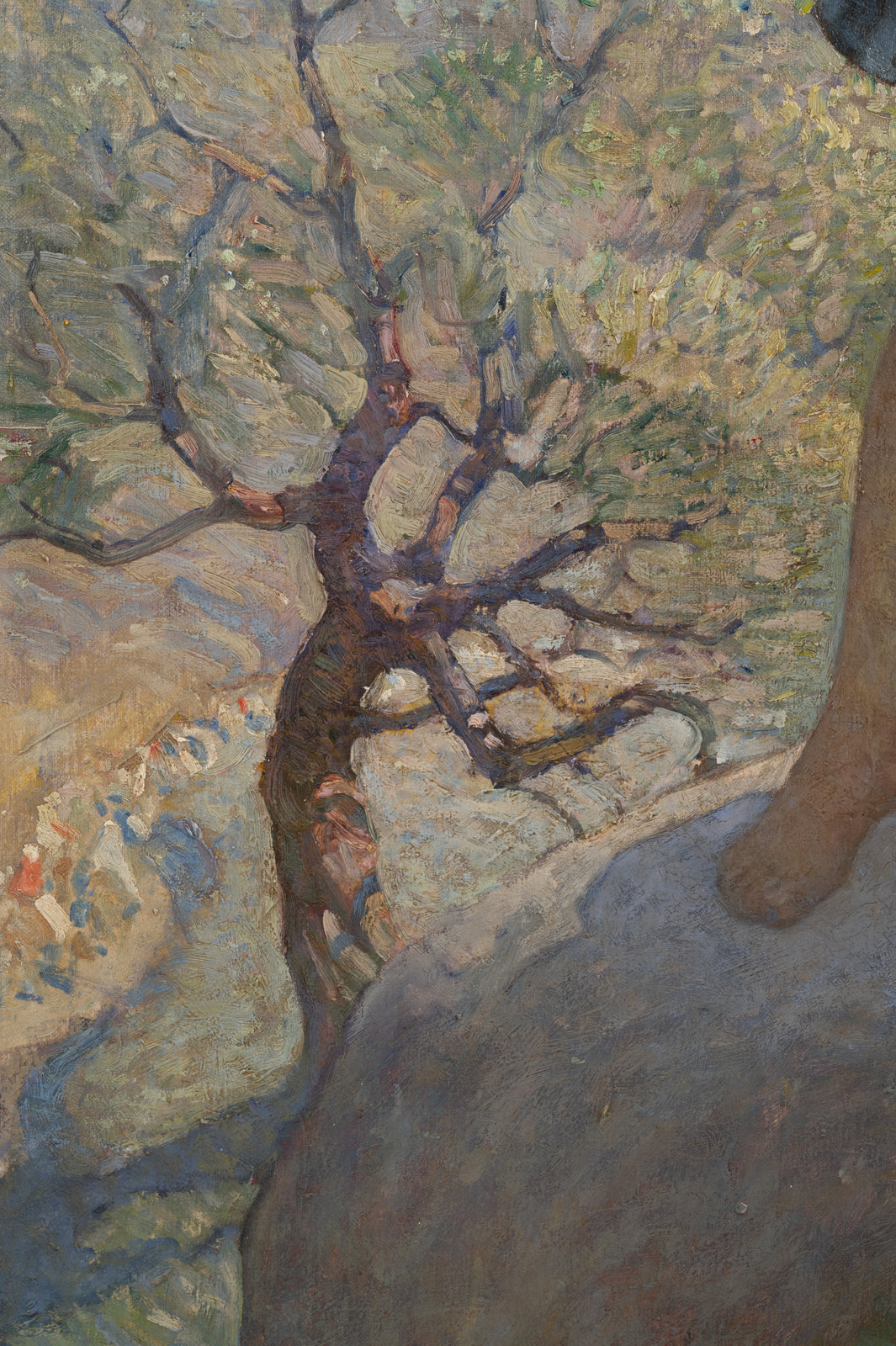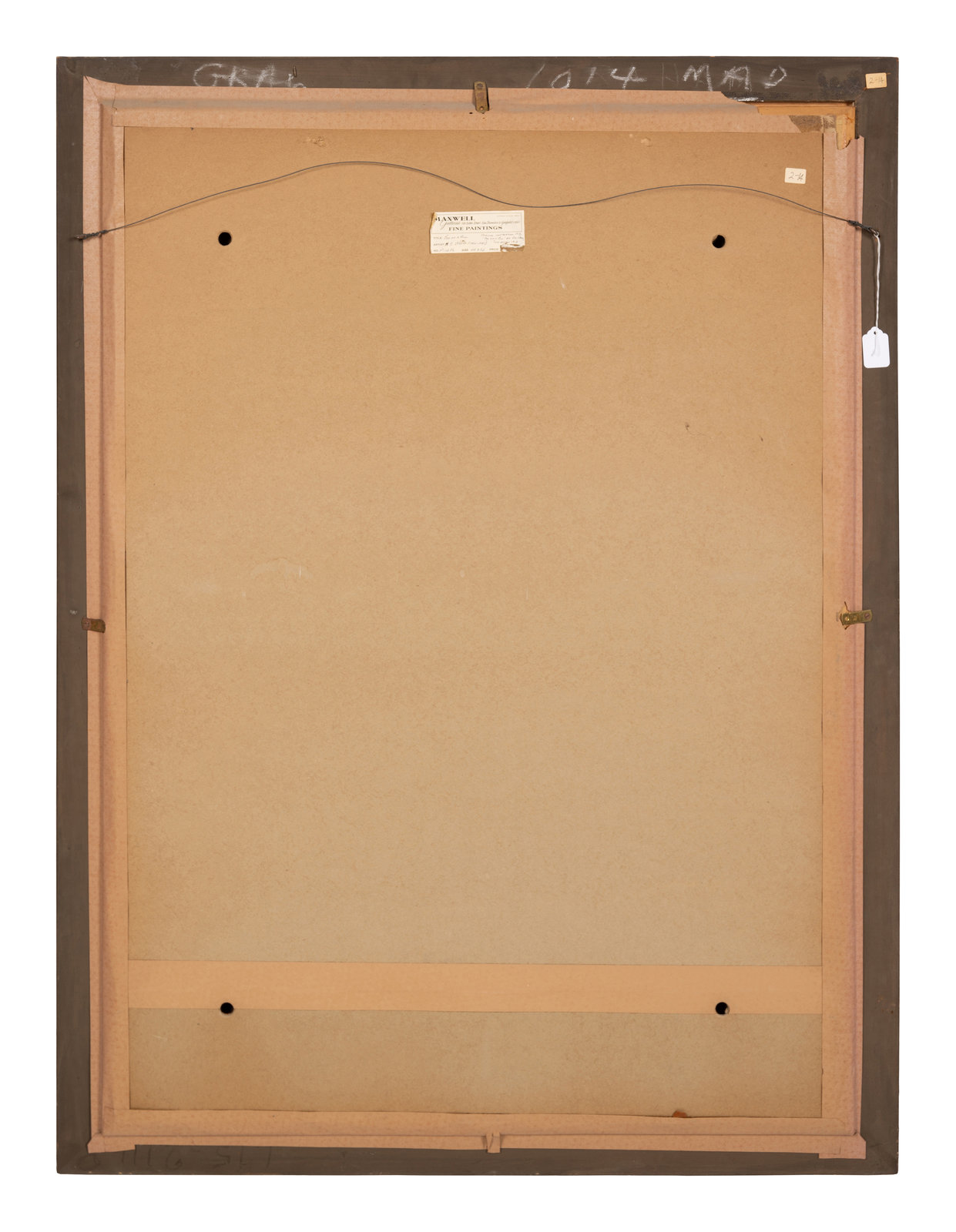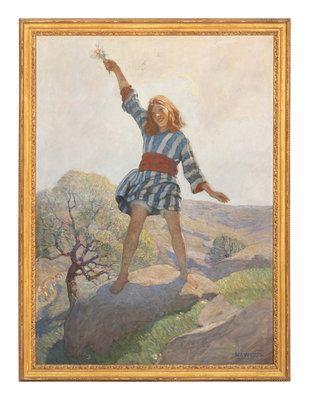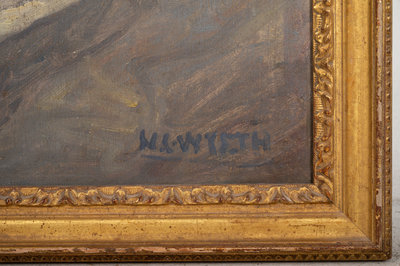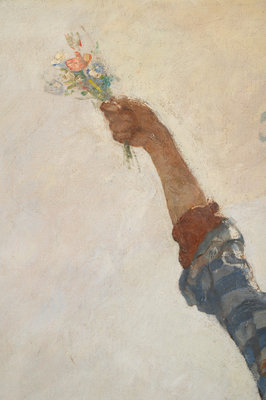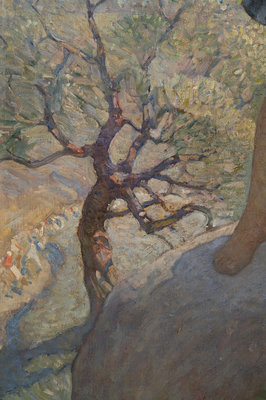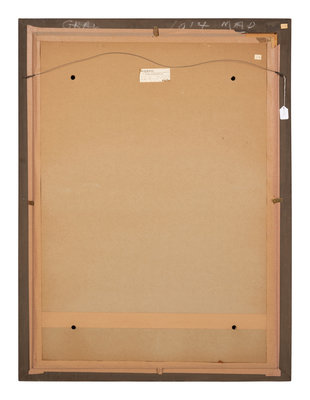N.C. Wyeth
(American, 1882-1945)
Leaping from Rock to Rock in Sheer Delight
, 1913
Sale 972 - American & European Art
Dec 13, 2021
10:00AM CT
Live / Chicago
Estimate
$120,000 -
$180,000
Sold for $162,500
Sold prices are inclusive of Buyer’s Premium
Lot Description
N.C. Wyeth
(American, 1882-1945)
Leaping from Rock to Rock in Sheer Delight
, 1913oil on canvas
signed N.C. Wyeth (lower right)
44 x 32 inches.
Property from the Trusts of Barbara V. and William K. Wamelink, Gates Mills, Ohio
Provenance:
Maxwell Gallery, San Francisco, California, 1967-69 (as Boy on a Hill)
Literature:
Henry Van Dyke, "The Lost Boy," Harper's Monthly Magazine, vol. CXXVIII, no. 763, December 1913, f. p. 4, (illustrated in black & white)
Henry Van Dyke, The Lost Boy, New York, 1914, f. p. 4, (reproduced in color, as The Boy was the Joy of the Journey)
Douglas Allen and Douglas Allen, Jr., N.C. Wyeth, The Collected Paintings, Illustrations and Murals, New York, 1972, pp. 237; 259, illus.
Christine B. Podmaniczky, N.C. Wyeth, A Catalogue Raisonné of Paintings, London, 2008, I.491, p. 283, illus.
Lot note:
By 1903, N.C. Wyeth was already creating illustrations for American periodicals, such as the Saturday Evening Post, when he garnered additional acclaim for his work with the publishing company Charles Scribner’s Sons. His compelling illustrations for that publishing house’s edition of Robert Louis Stevenson’s Treasure Island in 1911 led to further commissions for both magazines and books. The present work was painted in 1913 by Wyeth to be used as an illustration for Henry Van Dyke’s story, The Lost Boy, published in the December issue of Harper’s Monthly Magazine. The tale was later published by Harper & Bros. as a stand-alone book in 1914.
The Lost Boy is a tale from Jesus’s youth, in which he travels to Jerusalem with his parents for Passover and becomes separated from them while there. Leaping from Rock to Rock in Sheer Delight accompanies the passage that describes the journey to Jerusalem, which “…was a camping-trip, a wonder-walk, full of variety, with a spice of danger and a feast of delight. The Boy was the joy of the journey. His keen interest in all things seen and heard was like a refreshing spring of water to the older pilgrims…His unwearying vigor and pure gladness as he leaped down the hillsides, or scrambled among the rocks far above the path, or roamed through the fields filling his hands with flowers, was like a merry song that cheered the long miles of the way. He was glad to be alive, and it made the others glad to look at him” (Henry Van Dyke, The Lost Boy, New York, 1914, pp. 2-3).
When commenting on his duty as an illustrator, Wyeth remarked that his priority is to "be engaged as a potent addition to an author's works and not merely a collection of pictures starring for themselves, bent on dividing the reader's attention and further depleting the splendid illusions created by the text. Consequently, his initial demand of the illustrator is to strike at the very heart of a story; to paint in livid colors and masses, bold statements of the important characters" ("A Suggestion and a Comment on Illustrating Fiction," The New York Times, October 13, 1912). The artist achieves his goal brilliantly in the present work, which depicts the young Jesus as a boy reveling in his youthful energy and the freedom and adventure of the journey. The composition is dynamic, with the subject perched on a boulder and his body outlined against the clear sky. Behind him stretches the rolling hills of the springtime Jordan valley. He reaches his flower-filled hand joyously upward while a breeze ruffles his striped tunic.
Wyeth created two additional illustrations for The Lost Boy, including Come, Live with Us, For I Think Thou art Chosen and When He Comes He Will Rule Over the Whole World. In a letter written by Wyeth, the artist declares that "Harper's were delighted with my interpretation of Christ..." (NCW to Henriette Zirngiebel Wyeth, dated in another hand Oct. 3, 1913, WFA). Of the three images, Leaping from Rock to Rock in Sheer Delight is the most vibrant and successfully conjures a spirit of boyish happiness and discovery. It fully realizes Wyeth’s belief that his works were to not only complement but to enhance the narrative.
Condition Report
The physical condition of lots in our auctions can vary due to
age, normal wear and tear, previous damage, and
restoration/repair. All lots are sold "AS IS," in the condition
they are in at the time of the auction, and we and the seller make
no representation or warranty and assume no liability of any kind
as to a lot's condition. Any reference to condition in a catalogue
description or a condition report shall not amount to a full
accounting of condition. Condition reports prepared by Hindman
staff are provided as a convenience and may be requested from the
Department prior to bidding.
The absence of a posted condition report on the Hindman website or
in our catalogues should not be interpreted as commentary on an
item's condition. Prospective buyers are responsible for
inspecting a lot or sending their agent or conservator to inspect
the lot on their behalf, and for ensuring that they have
requested, received and understood any condition report provided
by Hindman.
Please email conditionreports@hindmanauctions.com for any additional information or questions you may have regarding this lot.


